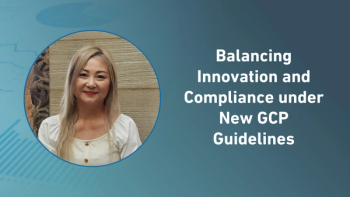
- Applied Clinical Trials-09-01-2004
What Do We Know About Clinical Trials?
I've recently reviewed many articles on subject recruitment, retention, and attrition in clinical trials. I have found the same three basic research methods: surveys (by telephone and in person), interviews, and focus groups. The information gathered from the three methods include demographics, willingness to participate, problems experienced in clinical trials, motivations for volunteering, health behaviors, social support, benefit expectations, and understanding of the research project. But such strategies collect only the most superficial data, so we don't know nearly as much about the clinical trial experience as we need to know.
I've recently reviewed many articles on subject recruitment, retention, and attrition in clinical trials. I have found the same three basic research methods: surveys (by telephone and in person), interviews, and focus groups. The information gathered from the three methods include demographics, willingness to participate, problems experienced in clinical trials, motivations for volunteering, health behaviors, social support, benefit expectations, and understanding of the research project. But such strategies collect only the most superficial data, so we don't know nearly as much about the clinical trial experience as we need to know.
In his 2003 book What Customers Think, Harvard professor Gerald Zaltman explains why traditional market research methods such as surveys, interviews, and focus groups—the methods often used to study the clinical trial experience—are of limited effectiveness, and what market researchers should be doing instead. Table 1 summarizes Zaltman's market research myths and market research realities, which I've adapted to the clinical trial experience.
One way to increase our understanding is to consider the recruitment and informed consent process as a marketing and sales presentation, in which prospective subjects offer their bodies and minds in exchange for an experimental drug or device. In this way, they can also be viewed as customers who have to make a buying decision. Do they "buy into" a clinical trial or not? From that perspective, emerging market research (realities) should replace traditional research strategies (myths) so that researchers can better understand the complexities of the clinical trial experience from a discipline that knows how to study customer behavior.
Table 1 Myths and realities in clinical trial research
The 21st century demands that clinical trials be understood using 21st century market research methods. Clinical trials can't be done without subjects, and subjects won't be recruited or retained unless sponsors and researchers are willing to incorporate new research strategies to better understand the complex nature of the clinical trial experience.
Articles in this issue
over 21 years ago
FDA inspections Outside the USA: An Eastern European Perspectiveover 21 years ago
eShowcaseover 21 years ago
Protocol Appraisal: A Study Site's Viewpointover 21 years ago
Clinical Trials in CEE: Harnessing the Potentialover 21 years ago
The Slow but Steady Pace of EU GCP Rulesover 21 years ago
New Data Standards and Policies Aim to Spur Clinical ResearchNewsletter
Stay current in clinical research with Applied Clinical Trials, providing expert insights, regulatory updates, and practical strategies for successful clinical trial design and execution.




